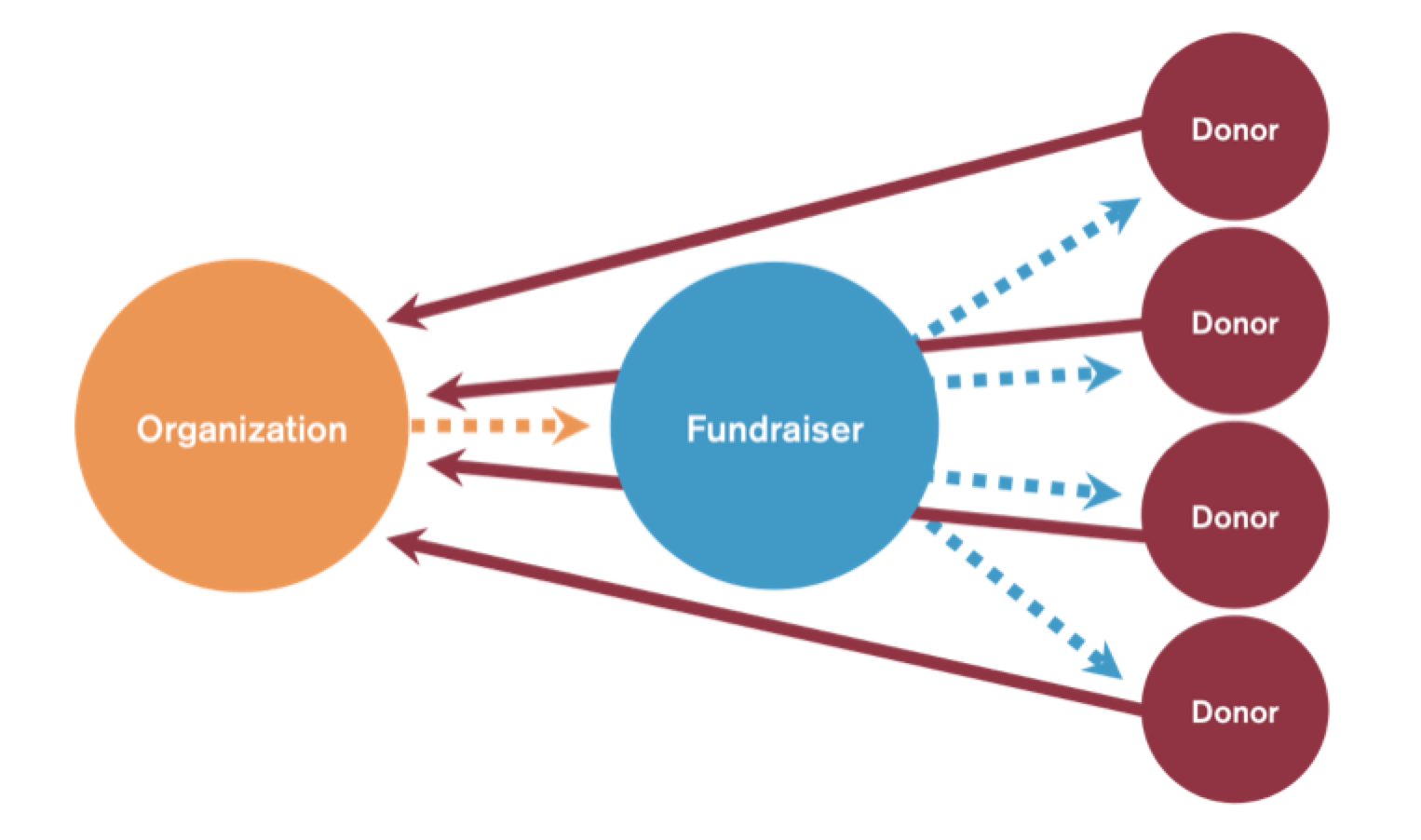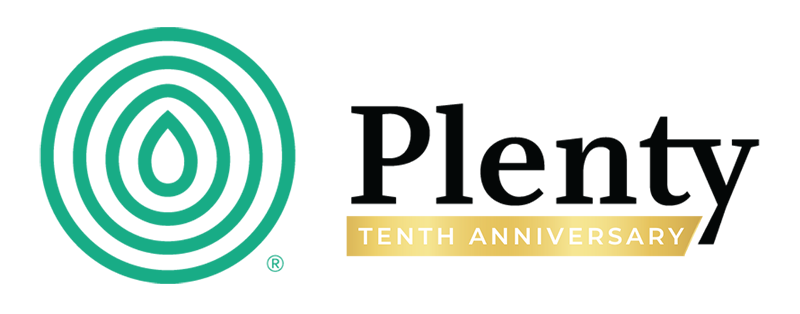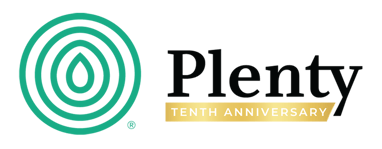After the Cuts: How to Find New Revenue for Your Nonprofit
Three weeks ago, I posted this piece about responding to funding cuts. It’s quickly become one of our most-read blog posts of the year. As the post has been read and shared in the space, I’ve gotten quite a few questions about the specifics: What should I do next? How, specifically, do I explore my data?
Given that it’s now March and we’re into a new theme here at Plenty— “Planting Seeds” — I wanted to answer the questions I’m getting and plant some seeds to provide more direction on where you can start.
If your nonprofit faces funding cuts, it’s not always obvious how to craft a response-and-recovery plan. After the inevitable stress-fueled Doom scenarios and the requisite “Big Ideas” session, someone eventually asks the very practical question: “Okay, where do we start?”
Or, perhaps you’re not facing cuts at all but are starting to dream about expanding your impact. The question remains: Who do we enlist to support us, and how?
Amazingly, most nonprofits already have untapped revenue potential within their existing networks. If this sounds like a Pollyanna-ish pep talk, consider these two research facts. One, the most likely predictor of a gift is a previous gift. (Citation here and food for thought here. ) And two, the number one reason donors give is that they are asked (citation here).
Wait, what?
This is important, so let’s break it down.
- Past giving predicts future giving: A donor’s previous contributions are strong indicators of their likelihood to donate again.
- Donors give when asked: The primary reason most individuals donate is because they are asked to do so.
In other words, the supporters you need to mobilize next are likely the ones you’ve already engaged in some way.
Growing from the Inside Out
If the immediate help you seek will likely come from donors already connected to you, then the first step is to conduct a thorough inventory of your existing relationships. Before you let this fact discourage you—I can hear executive directors across the country saying, “But we don’t have enough support as it is!”—I ask you to reframe this as a major blessing. Instead of wrestling with expanding your funnel, which has significant pitfalls, you can focus on people who already know you and your organization.
You may still have to reach beyond your existing network for support. However, you expand your existing network from the inside out, not from the outside in. The growth path to new supporters usually travels through existing supporters.
This idea is core to the way we think about growth at Plenty. Our logo—a ripple moving outward—symbolizes the concept of change from the inside out. Change and impact don’t happen by starting at the outer edges; they begin in the center and grow outward. The most profound personal changes and the most substantial community movements start with the people already engaged, deepening connections and strengthening commitment before expanding into new circles.
By looking closely at your donor database, crafting the right kinds of asks, and smartly delivering them, you can identify and secure new revenue to help sustain and grow your mission.
Start with Your Own Data
Okay, I’ve effectively bludgeoned you with the advice to start with the supporters you already have. This means learning to love your donor database. It’s time to dig in! You can find new ways to increase engagement and revenue by segmenting and analyzing donor behavior.
At the risk of patronizing you, I won’t assume that you like to or know how to get your hands dirty in the data. So, very specifically, what I recommend you do as a first step is to run a report of all gifts received by donor and date over the past three years or so. An Excel or Google Sheets report is fine. Set the report up so you can sort it by amount (to identify large gifts) or by person (to identify a set of gifts from one person).
I. Engage Your Largest Donors Personally
First, look at the report and identify anyone who has made a single large gift. (“Large” is obviously relative – trust your instincts and experience about what amount is notable for your organization.) These donors have already demonstrated a strong commitment to your cause, and a personalized approach can make a significant difference.
- Schedule a one-on-one meeting with them (virtual or in-person) to update them on your work and share your current funding needs.
- Ask for their insights, connections, and advice—often, major donors are happy to help in ways beyond financial support.
- Offer meaningful opportunities for them to get more involved, such as exclusive briefings or invitations to behind-the-scenes events.
You’re not looking to dodge or delegate the personal, high-touch work – you’re looking to increase it! Dive in. High-touch is where the action is. Schedule as many personal meetings as you can. And remember, when you meet these donors, do not lead with your needs.
II. Identify High-Capacity, Recurring Small Donors
Next, find donors who are giving consistently. Donors who give frequently but in small amounts can be a significant source of revenue. These donors are sometimes overlooked because any single gift may not be eye-popping – but often, some of your biggest lifetime donors are regular contributors. You will find donors in this list who have cumulatively given more than the “big donors” from Step I.
Analyze these cumulative giving trends over time to see who has contributed significant amounts in total donations.
- Launch a mid-level giving program with tailored messaging for this segment. Begin to recognize the length of giving, not just the size of single amounts.
- Offer a special recognition society for long-time donors to incentivize continued and increased giving – for example, a program to recognize and cultivate continuous participation over time.
- Share impact stories that highlight how their consistent support has made a difference.
Again, a key goal here is personal contact. Many of these regular donors may not know how important they are to you – so tell them!
Quick story: Many years ago, I led a donor analytics review for a large, east-coast cancer hospital. My client, a titan of fundraising who continues to be a mentor to this day, was exactly the kind of person I love working with: experienced, competent, self-assured, and curious. She said, “Jeff, I don’t think anything in the data will surprise me, but I’m open to the possibility!” I responded with a line I’ve used many times since then: “I don’t doubt it, but let’s make sure.”
After a few weeks, we found that a small segment of recurring participants in an endurance event program were responsible for more than half of the campaign’s lifetime revenue. It wasn’t easy to see from the raw reporting because most of these people weren’t the most prominent donors or fundraisers. But they were the most consistent, and over time, consistency matters—a lot.
I beamed when she said, “Well, I’ll be. You surprised me.”
A couple of months after that, I had the chance to meet one of these high performers in person. I said, “I want to thank you because you may not know this, but the 10% of people like you who participate every year power over half of what we raise.” He was stunned – and proud. He didn’t know the impact of his giving because the organization had never told him – and the organization had never told him because, until our engagement, it hadn’t known.
Based on that engagement, my client retooled the hospital’s recognition program and significantly grew this group of key supporters.
III. Ask One-Time Donors to Give Sustainably
This third approach is a blend of the first two. Many donors contribute only once, often in response to a specific campaign or event. However, they may be open to providing ongoing support if given the right opportunity. As subscriptions invade every aspect of our lives, from fitness classes to streaming services, it may feel unseemly to ask your donors for the same. However, recurring giving has proven to be an effective paradigm and a good way to normalize your cash flow while deepening engagement with key supporters.
Avoid putting all your effort into setting up the front end of a recurring giving program and then neglecting the follow-up. You can’t put the program on autopilot; this is not a set-it-and-forget-it project. Donors will defect from you if they know they are not appreciated. Sure, set up a good landing page and email series, but then challenge your team to put the same level of care into ongoing updates and progress reports to these sustaining donors.
Reaching Beyond Your Database
While engaging current donors is the fastest path to increased revenue, external funding opportunities are also key.
VI. Ask Donors to Introduce You to More Donors
The best way to expand your network isn’t by entering the mass market but by leveraging your existing supporters. Your existing donors can be robust connectors, introducing you to new potential donors who share your values and interests. You just have to ask them to share!
- Ask donors to post on social media about why they support your nonprofit, making it easy for their friends and followers to engage. You can even provide reusable images, downloads, and posts.
- Ask key donors to host small house parties or intimate gatherings where you or your leadership can speak directly with new prospects.
- Hold larger-scale events like galas or participatory fundraising events to provide a structured way for supporters to bring new people into your orbit. While these types of events sometimes receive criticism—and rightly so – peer-to-peer fundraising has enormous power that is hard to replicate with other channels. A key here is to treat the event as the start of the conversation, not the end. They remain effective at broadening networks and bringing new donors into the fold.
V. Explore Grant Opportunities
Grants can provide significant funding but require time, focus, and strategy. Grants can also expose you to the same issues as federal funding, namely, large pots of money from single sources are both incredibly wonderful and incredibly risky. My advice is to develop a robust, diversified donor base, but I will admit that many other consultants would tell you precisely the opposite.
I can’t help but think that some prefer grant writing because it can be essentially an academic exercise – you sit in your office and write a huge term paper, then send it off. Donor fundraising, however, is personal, ground-level, and requires you to pitch—a lot.
I believe developing the personal pitching muscle is better in the long term. It’s also more fulfilling and more sustainable. Granting organizations come and go, but relationships are enduring. In the end, you have to decide.
In any event, there’s nothing wrong with grants in a diversified portfolio. To streamline your search, use the Foundation Directory Online at Candid, which is by far the best single source of information out there and will help you identify grant opportunities based on mission alignment. For many smaller nonprofits, a subscription to the Foundation Directory is a significant investment, but you really should consider it a required cost of doing business.
Other important resources:
- Local and Regional Community Foundations – Many cities and states have funding pools dedicated to nonprofit work.
- Corporate Philanthropy Programs—Many businesses offer grants or sponsorships that align with their social responsibility and philanthropic goals.
To increase your chances of success:
- Focus on grants that align with your mission and current programming! This point seems so obvious, but it is often disregarded. Most funders will see through contortions in programming that you make simply to qualify for money – and if you win a grant based on a contortion, it can cause awkward mission delivery challenges. Focus your mission and find grants that align with it.
- Build relationships with funders before submitting proposals. It might not improve your hit rate, but you may get better feedback about the strengths and weaknesses of your submission. See, you can’t get out of the personal conversations! ;-)
- Follow up on past applications, even if you were declined—many funders encourage resubmissions with improved proposals.
Final Thoughts: The Power of Segmentation
Whether you’re engaging existing donors, reaching into new networks, or applying for grants, segmentation is a key to success. You can create highly personalized outreach that yields much better results by categorizing supporters based on giving history, engagement level, and capacity.
Finding new revenue sources can be overwhelming, particularly if you are racing against a finite and loudly ticking financial clock. Start with what you already have—your database of relationships—then expand outward to strategic funding opportunities. With a thoughtful approach, you can adapt and thrive.
Yes, you can!
Remember, in fundraising, your optimism for a better world is one of your biggest allies. There are plenty of people saying "it isn't going to work." Paint a different picture, for yourself, your team, and your donors.
And if we can help, please let us know.
Next Steps:
✔ Review your donor database and identify top prospects for deeper engagement, including large one-time donors and consistent recurring donors.
✔ Explore grant opportunities using Candid and other resources.
✔ Develop segmented fundraising strategies to say thank you, share mission successes, and convey new needs.
✔ Need help finding insights in your data or crafting a rapid strategy pivot? Our Myriad Insight Workshop can help your nonprofit unlock new funding pathways. [Learn more here.]
Read Part 1: Leading Through Uncertainty
The post on this page is a follow-up to an earlier post about leading through funding cuts. The upshot: Taking a “wait and see” approach to funding challenges is a massive risk. It's time to invest and innovate. Read More >
Find Clarity, Drive Quick Results
If you're feeling the pressure of making quick strategic decisions without clear data-driven insights, our Myriad workshop can help.
During Myriad, we will help you mine, visualize, and segment your donor data to create new growth strategies.
Share this
You May Also Like
These Related Stories

Lead Through Uncertainty: Your Nonprofit Can Adapt Amid Funding Cuts

The Complete Guide to Leveraging P2P Networks



No Comments Yet
Let us know what you think